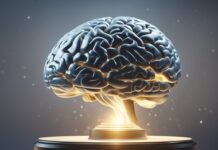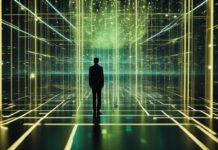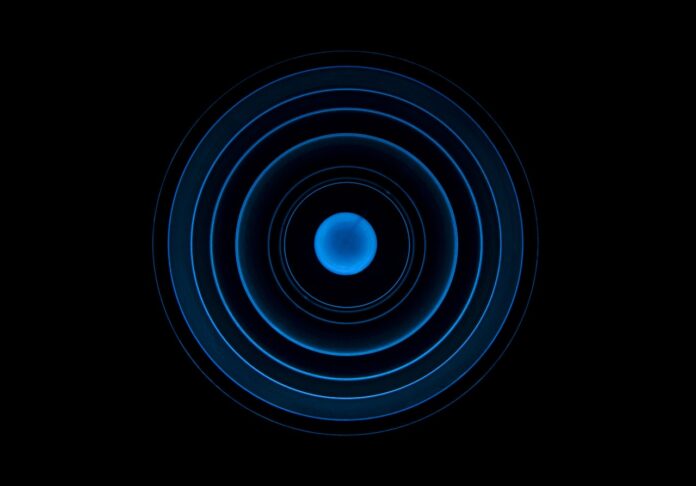
This is rather interesting question and thought experiment, especially because year 2030 is so near in the future (7 years from writing this article), and also, we’ve had many influential organizations or websites writing about similar topic several years ago (like World Economic Forum, McKinsey, Wired Magazine etc…)
So it would be interesting to see their predictions several years ago and also contemplate about potential near future.
I mean, 7 years is really small period of time from one perspective but then again, having in mind recent developments in AI, we could expect enormous changes in next several years.
Both for the whole world, our planet and our lives.
So, let’s dive into the topic.
Related: What Will World Look Like In 2050?
Related: What Will The Future Look Like?
Related:What Will Happen To Earth In 2025?
Related: What Will Humans Look Like In 1000 Years?
Related: What Was Life Like 1000 Years Ago?
Past predictions about the future – and how they went?
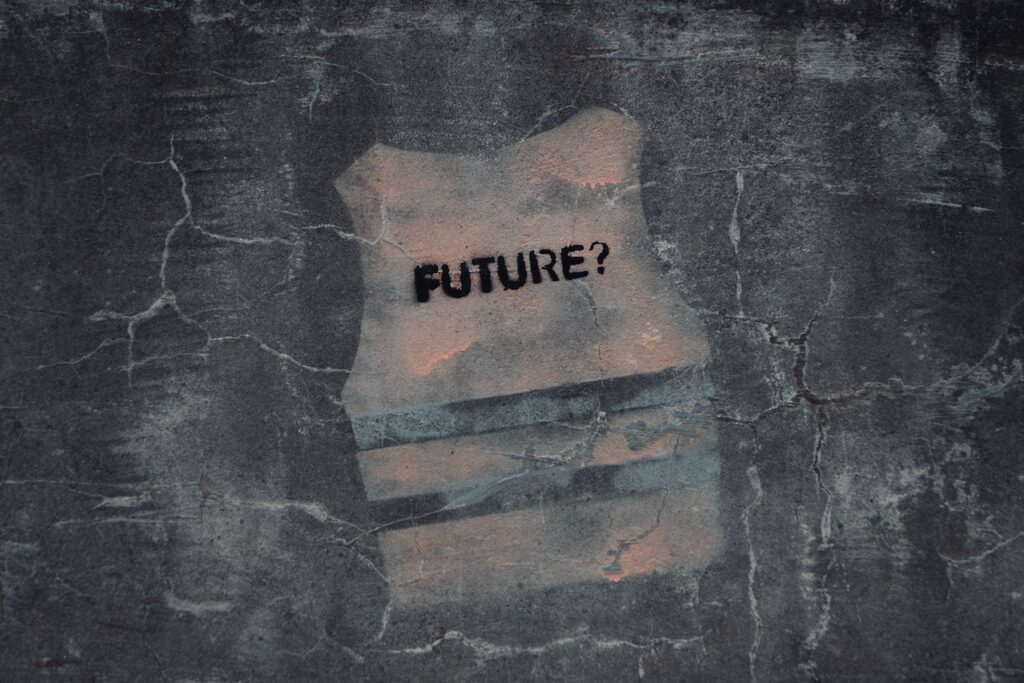
We’ve already mentioned World Economic Forum. They did their prediction about year 2030 many times. So, let’s see what they had to tell us about it.
Just look at the following articles:
- This one is from 2015 trying to predict 2025: Technology tipping points and societal impact report
- This one is from 2016: What will the world look like in 2030?
- This one is from 2017: 5 predictions for what life will be like in 2030?
And there are many more like this, however let’s stick with these three. Are they too much futuristic or perhaps too much realistic?
Let’s see.
2015 predictions about 2025

We are almost in year 2025 so let’s start with first WEF’s report and specifically following table statistics where 800 technology executives and experts from ICT industry were surveyed. Table represents percentages of them agreeing that one of following statements will become reality, or be true by 2025.
Table: Tipping Points Expected to Occur by 2025
| 10% of people wearing clothes connected to the internet | 91.2 |
| 90% of people having unlimited and free (advertising-supported) storage | 91.0 |
| 1 trillion sensors connected to the internet | 89.2 |
| The first robotic pharmacist in the US | 86.5 |
| 10% of reading glasses connected to the internet | 85.5 |
| 80% of people with a digital presence on the internet | 84.4 |
| The first 3D-printed car in production | 84.1 |
| The first government to replace its census with big-data sources | 82.9 |
| The first implantable mobile phone available commercially | 81.7 |
| 5% of consumer products printed in 3D | 81.1 |
| 90% of the population using smartphones | 80.7 |
| 90% of the population with regular access to the internet | 78.8 |
| Driverless cars equaling 10% of all cars on US roads | 78.2 |
| The first transplant of a 3D-printed liver | 76.4 |
| 30% of corporate audits performed by AI | 75.4 |
| Tax collected for the first time by a government via a blockchain | 73.1 |
| Over 50% of internet traffic to homes for appliances and devices | 69.9 |
| Globally more trips/journeys via car sharing than in private cars | 67.2 |
| The first city with more than 50,000 people and no traffic lights | 63.7 |
| 10% of global gross domestic product stored on blockchain technology | 57.9 |
| The first AI machine on a corporate board of directors | 45.2 |
Ok, so now let’s analyze some of these predictions.
- 10% of people wearing clothes connected to the internet. This one did not realize as of 2023. If we categorize smart watches as clothes then we’re nowhere near that number. Namely, the smartwatch penetration rate is 2.69% globally as of 2023. And smart watches are the main thing that people wear and that are connected to the internet. Sure, there are smart bracelets and smart rings but rare people use them and even less people have some kind of smart T-Shirt that is connected to internet. So-called Internet of Clothing was a big thing and part of many predictions some 10 years ago. And while many people have wearables (like abovementioned watches and sport trackers), other items that we wear are not really connected to anything (except to our body).
- 90% of people having unlimited and free (advertising-supported) storage. Hm… As of April 2023 (per Statista.com), there were 5.18 billion internet users worldwide, which amounted to 64.6 percent of the global population. So, year and a half before 2025. we’re not even close to predicted number with regards to internet connected population. Having said that, there’s no chance that by 2025, 90% will have unlimited storage. Most online storage today is not unlimited (yet many companied claimed that it is), and cloud storage providers are actually lowering amount of their free gigabytes, while at the same time trying to charge monthly subscription fee to provide users with 100 gigabytes of storage.
So again, this prediction will not come true by 2025. We’re 99% percent sure of that.
- 1 trillion sensors connected to the internet. Well, this is a tricky one because we really don’t have much data on the actual sensors. We have data about number of devices connected to internet and most of those devices have multiple sensors. Having said that, IoT is a rapidly growing industry. By TechJury.net there’ll be 13.1 billion connected devices by this year’s end, while the number of installed ones will reach 42.62 billion.
So, looking at this prediction it is likely to come true (if it hasn’t already). Just look at the growth that we’ve just mentioned (currently connected devices vs installed ones), and you could easily conclude that trillion sensor prediction by 2025 is a correct one.
Ok, so we’ve covered 3 out of 21 predictions in table shown above. Probably around 30% of those will come to be true by year 2025, and by year 2030 many will become reality of day-to-day life.
Nonetheless, let’s dive deeper into year 2030 and from our perspective try to predict what will happen in different segments of our lives.
World in 2030?

So, ladies and gentlemen (or ladies and germs, boys and girls as the great Tim Ferris would say), gather ’round! Strap yourselves in because we’re about to embark on an interesting journey into the not-so-distant future.
Now, I know everybody is wondering, “What the heck is this 2030 world going to look like?”
Well, we’re really not sure.
As we showcased in one of first paragraphs – no prediction about the future is certain.
But nonetheless, let’s delve into the topic and explore several different categories of our live and our world in 2030.
The Age of Singularity
By 2030, it is believed that we could reach a pivotal point in human history – the Singularity. This transformative era will mark the convergence of artificial intelligence, nanotechnology, and biotechnology, causing a profound acceleration in technological progress. With machines surpassing human intelligence and advancements happening at an unprecedented rate, the Singularity will herald a new chapter in human evolution.
Kurzweil predicts that artificial intelligence will have permeated every aspect of our lives, from smart homes that anticipate our needs to AI-driven medical diagnoses that detect diseases before they manifest physically. In this future, AI assistants will be highly sophisticated, capable of processing complex tasks, and augmenting human capabilities, leading to a seamless fusion of man and machine.
The Biotechnological Renaissance
In the world of 2030, biotechnology will have unlocked the secrets of our genetic code, revolutionizing healthcare and life expectancy. Gene-editing tools like CRISPR will have become more precise and widely accessible, enabling us to eradicate hereditary diseases and modify genes to enhance various human traits.
Ray Kurzweil envisions a future where nanobots roam our bloodstream, seeking out and eliminating cancer cells or repairing damaged tissues. Furthermore, regenerative medicine will have advanced significantly, allowing us to regrow organs and limbs, transforming the treatment of injuries and disabilities. With these developments, we may witness an extension of the human lifespan, bringing us closer to the possibility of achieving immortality.
Renewable Energy and Environmental Stewardship
By 2030, the world will have made substantial strides in transitioning from fossil fuels to renewable energy sources. Kurzweil emphasizes that solar energy, wind power, and other eco-friendly technologies will have become the primary sources of electricity. The integration of AI and smart grids will enable more efficient energy distribution and consumption, ensuring sustainability and minimizing waste.
Related: What would happen to the world without electricity?
Moreover, innovations in carbon capture and sustainable agriculture will contribute to mitigating the impacts of climate change. The world will be more environmentally conscious, with individuals, governments, and corporations working in harmony to preserve the planet for future generations.
Education and Learning Transformation
Education in 2030 will have undergone a significant transformation, thanks to advancements in technology and AI-driven personalized learning. Many scientists predicts that traditional classrooms will be a thing of the past, replaced by virtual and augmented reality learning environments. Students will have access to tailored educational content, adapting to their unique learning styles and capabilities.
With the rise of lifelong learning, individuals will have the opportunity to continually upskill and adapt to the ever-changing job market. AI-powered tutors and mentors will guide learners throughout their lives, fostering a culture of continuous growth and intellectual exploration.
At least that’s what optimistic scientist are saying. But what about repetitive life that many people are leading? Will that change in near future? Well, scientist are not bothered by this problem. And it is a big problem.
Interplanetary Exploration and Colonization
In the world of 2030, humanity will have made substantial progress in space exploration and colonization efforts. Kurzweil envisions the establishment of permanent settlements on the Moon and Mars, laying the groundwork for future interstellar travel.
Advancements in propulsion technology, such as ion drives and space-based solar power, will make deep space missions more feasible.
Well, we'll see about that. Nonetheless we are expecting good progress in this category.
The collaborative efforts of governments and private enterprises should probably accelerate our understanding of the cosmos and push the boundaries of human exploration.
Health and Medicine Revolution

In the world of 2030, the field of health and medicine will have undergone a remarkable revolution, propelled by advancements in technology and biotechnology. Futurists are envisioning a future where medical care is personalized, preventive, and integrated with cutting-edge technologies to enhance human well-being.
So to dive deeper into this topic as it is really important, let’s see potential developments.
- Personalized Medicine:
By 2030, medical treatments will be tailored to individual genetic profiles and health data. Through advancements in genomics and the integration of AI, doctors should have a comprehensive understanding of a patient’s genetic predispositions and susceptibility to specific diseases. This knowledge will enable the development of personalized treatment plans and the prescription of targeted therapies, optimizing the efficacy of medical interventions and minimizing side effects.
- Disease Prevention and Early Detection:
In the future (if we’re optimistic), the focus of medicine will shift from treating diseases to preventing them altogether. Doctors predicts that wearable health monitoring devices and sophisticated AI algorithms will continuously analyze an individual’s health data, enabling early detection of potential health issues. This proactive approach will empower people to make lifestyle changes, reducing the risk of chronic illnesses and ensuring better overall health.
- Nanotechnology and Medical Nanobots:
Nanotechnology will play a pivotal role in revolutionizing medicine. Nanobots, microscopic robots, will be deployed in the body to target specific cells or pathogens with unparalleled precision. These tiny machines will assist in drug delivery, perform intricate surgeries at the cellular level, and clear arterial blockages, effectively combating a range of diseases.
- Advanced Prosthetics and Neural Interfaces:
Advancements in neurotechnology will lead to the development of highly sophisticated prosthetic limbs, seamlessly integrated with the human nervous system. Neural interfaces will allow individuals to control artificial limbs or interact with technology through direct brain-computer connections. This breakthrough could be able to transform the lives of amputees and individuals with neurological disorders, restoring mobility and independence.
- AI-Assisted Diagnoses and Treatment Planning:
AI-powered diagnostic systems will probably become an integral part of medical practice (if not by 2030 then surely by 2050). These systems will analyze vast amounts of patient data, medical literature, and treatment outcomes to assist healthcare professionals in accurate diagnoses and treatment planning. AI’s ability to process information at an unprecedented scale will result in quicker and more accurate medical decisions, improving patient outcomes and reducing healthcare costs.
- Global Health Connectivity:
In the world of 2030, global health systems will be more interconnected than ever before. Telemedicine and virtual healthcare platforms will allow people from remote areas to access medical expertise and resources. Additionally, international collaboration and data sharing will expedite the identification and containment of infectious diseases, ensuring a swift response to global health threats.
… and so, with health let’s segway to the topic that is in everyone’s minds when talking about future. And that is AI and employment.
Artificial Intelligence and the Workforce Evolution
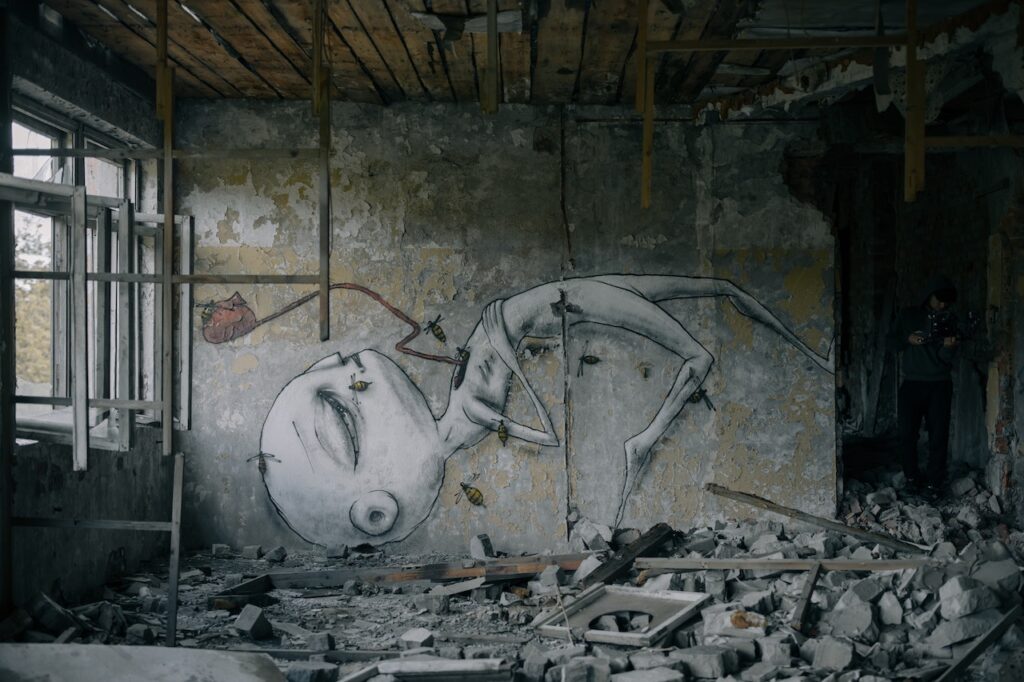
By 2030, the relationship between artificial intelligence and the workforce will have undergone a profound transformation, reshaping industries and the nature of work itself. Ray Kurzweil’s perspective on this topic explores how AI will not only augment human capabilities but also revolutionize the job market, presenting both challenges and opportunities for individuals and societies.
Having said that – probably there will be more challenges than opportunities as we’re already witnessing in many large AI related corporations.
- AI Augmentation and Human-Machine Collaboration:
In the future, AI will play a pivotal role in enhancing human productivity and creativity. Rather than replacing human workers, AI (by optimistic view) will be integrated into various industries to augment human capabilities. AI-driven tools and systems will assist professionals across sectors, streamlining processes, and providing valuable insights based on vast amounts of data. Human-machine collaboration will become the norm, creating a synergy that elevates productivity and innovation to unprecedented levels.
- Shift in Job Roles and Skill Requirements:
As AI takes over repetitive and routine tasks, the workforce will experience a shift in job roles and skill requirements. Jobs that are highly repetitive or easily automatable may decline, while demand will surge for positions that require creativity, critical thinking, emotional intelligence, and adaptability. Individuals will need to continually upskill and reskill to remain relevant in the evolving job market, and lifelong learning will become essential for career advancement.
- Rise of the Gig Economy and Remote Work:
AI’s impact will extend to the structure of the workforce, with the rise of the gig economy and remote work. AI-powered platforms will connect freelancers and independent contractors with employers, enabling a more flexible and agile job market. Remote work will become more prevalent, as AI-driven communication and collaboration tools will facilitate seamless virtual interactions, transcending geographical boundaries and time zones.
- Addressing Technological Unemployment:
While AI-driven automation presents numerous benefits, it also raises concerns about technological unemployment. Many researchers are emphasizing the importance of addressing this issue through various means, such as universal basic income, retraining programs, and job-sharing initiatives. Policymakers and businesses will need to collaborate to ensure that the benefits of AI are distributed equitably, and the potential disruptions to the workforce are managed effectively.
- AI and Entrepreneurship:
The democratization of AI technologies will foster a new era of entrepreneurship. Startups and small businesses will have access to AI tools and platforms, enabling them to innovate and compete with larger enterprises. AI’s ability to optimize processes and gather insights from vast datasets will level the playing field, creating opportunities for agile and innovative businesses to thrive.
Related: First book written by AI about meaning of life and death by Domagoj Pernar. Or to be precise by Hybrid Intelligence (AI and beforementioned Domagoj Pernar).
With all that we’ve covered a lot of material. There could be hundred of thousands more words if we would to explore all possible industries and segments of human life, but we need to conclude somewhere.
So, to conclude…

The future (even near future) is a realm of boundless possibilities, where the unimaginable becomes reality. The world of 2030, as we’ve glimpsed through this article, holds promises that challenge our understanding of what’s potentially achievable.
In this envisioned future, artificial intelligence reaches unparalleled heights, empowering us to lead lives of convenience and efficiency. With AI as our (non)trusted companion, personalized medicine becomes the norm, and regenerative biotechnology holds the potential to revolutionize healthcare.
The drive towards sustainability becomes an urgent mission, with renewable energy sources and environmental stewardship at the forefront. Simultaneously, the pursuit of knowledge evolves, revolutionizing education and lifelong learning through immersive technologies and AI-guided exploration.
Humanity perhaps reaches for the stars (not so likely), venturing beyond Earth’s boundaries, setting foot on the Moon and Mars, embarking on a journey that could reshape our destiny as an interplanetary species.
The journey to 2030 and beyond will be prevalent with complexities, uncertainties, and (perchance) triumphs.
By weaving innovation with compassion, curiosity with wisdom, and progress with carefulness, we can make this future an encouragement of hope and progress for generations to come.
But then again, we really can’t know. No one predicted Covid pandemic. No one predicted war between Russia and Ukraine. And actually, no (almost) one predicted Internet.
So having said, that no one can predict what will 2030 look like. Perhaps we’ll be in 3rd World War. Perhaps we will live more happily than ever before. And perhaps, 90% of everything will be completely the same as it is now. In year 2023.
Those who will be alive will know the difference.
….Or will they?











